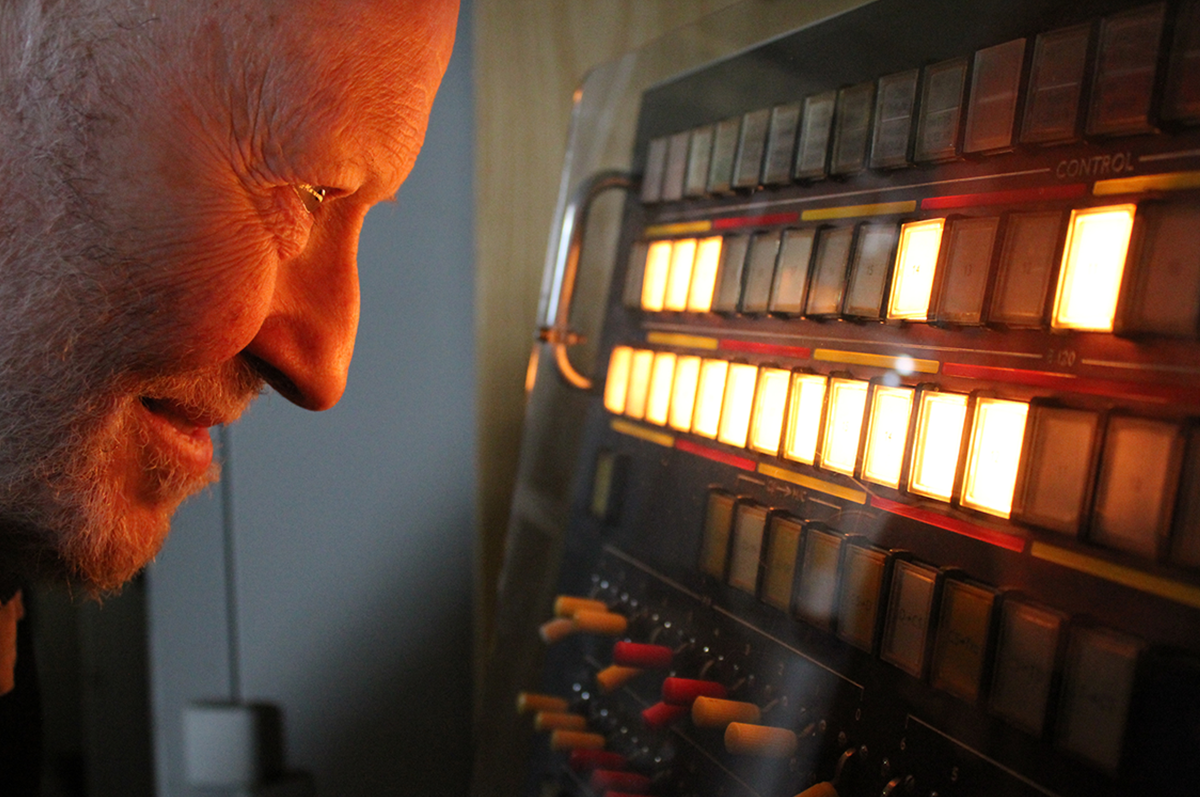***SYNOPSIS***
STFC seminar – ‘Following Flexipede’s Footsteps: Software Archaeology and Cybernetic Serendipity’
Kate Sullivan, Professor David Duce and Dr Victoria Marshall with Professor Bob Hopgood.
An animator, Atlas Computer Laboratory and RAL alumni.
In 1967, Tony Pritchett used the Ferranti Atlas computer at London University, a nuclear fusion laboratory, and a squeaky office chair to create a short film featuring what is arguably the world’s first computer-animated character.
The following year, all two minutes of this whimsical little film were premiered at Cybernetic Serendipity – a flagship exhibition of art, music, mathematics and sculpture which blurred the boundaries between arts and sciences and changed the world’s view of computers as more than just automatic calculating machines.

